No products in the cart.
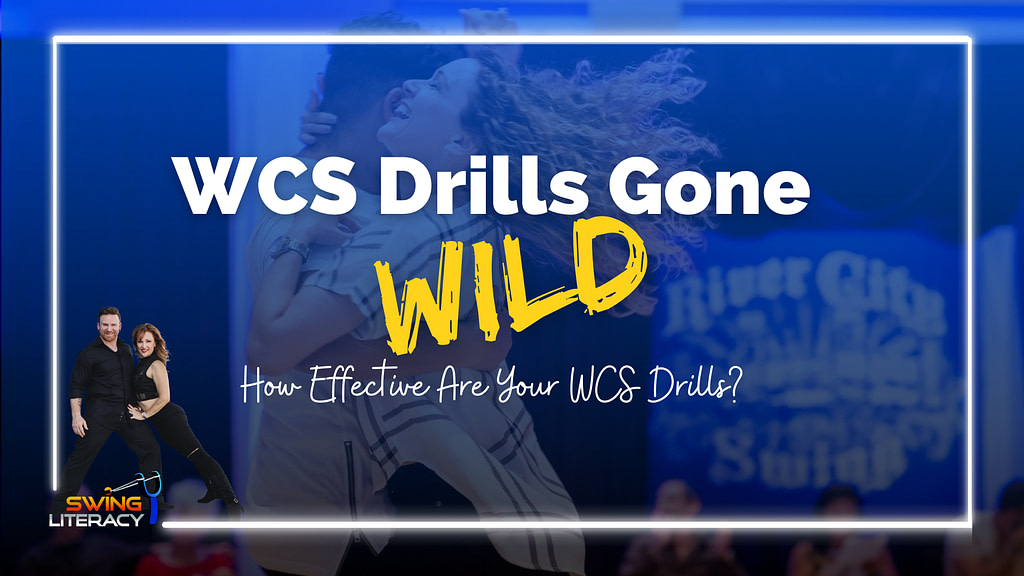
Drills Gone Wild: How effective are your drills?
Reading Time: minutes remaining
It’s great to see students all over the world taking the initiative to practice on their own. Practice of personal movement skills is part of a balanced diet of partner dance learning and skill development, regardless of your ambition level.
We are strong advocates of “homework”: once you learn your skills in your lesson, you need hours of repetition time in order to automate it into your body.
BUT: Practice does not make perfect; practice makes permanent, which means that your dance practice homework is only worth it if it is authentic, meaningful, and appropriate for you.
As a certified educator and coach, I’m going to get a little nerdy here and talk about how learning works and how drills can make or break your dance.
We train both dancers and teachers in the Swing Literacy programs how to think critically and analyze the drills and advice they hear, rather than accepting them at face value.
Around the world, when it comes to drills, we’ve seen (and heard about) the good, the bad, and the ugly. Here’s how to think critically about the drills you are considering. Be sure to read to the end for a juicy treat!
What exactly a drill IS:
A drill is the repetitive practice of an isolated element of a larger game or activity.
Drills isolate a particular movement or skill from its context in order to create manipulatable conditions that allow for focus and feedback without distractions.

Breaking down the component parts
When you consider a pattern or a movement, instead of viewing it as a package, notice its component parts. Everyone instinctively breaks down patterns into counts, but this is only the most superficial aspect. Each move can be broken up into “Lego blocks” that have nothing to do with timing. The key is to isolate, analyze, refine, and repeat each of these skills BEFORE applying them to the greater context of a pattern.
This is a lot harder than it looks: this topic is expanded in breadth and depth in the Swing Literacy programs.
Isolating from distractions
In the case of WCS, “distractions” can refer to any of the elements: footwork, partner, floorcraft, patterns, and music.
For example, while someone is drilling foot rolling technique, it is “distracting” to have to add 6-count timing to this exercise, so this additional brain task should be reserved for when the technique has stabilized and the student can handle more.
At a soccer practice, the coaches don’t just divide the kids up and play a scrimmage (practice game); they take away one or more of the distractions: teams, goals, opponents, or travel. They might set up cones and create a drill out of one aspect of the sport that the kids need to work on, such as shooting, passing, or corner kick plays. All sports, including ours, need drills.
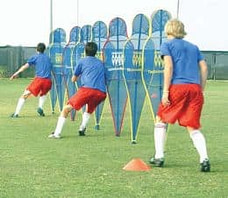
Manipulating variables
Drills don’t need to exactly replicate the practical application in the dance, but they must utilize the realistic motor behaviour (physical action).
For example, when drilling stretch, we have students practice expanding away from their partner using all the handholds and in every imaginable position. They may not need to ever use a “stretch behind the back with a cross hand hold”, but since the goal is to train the brain and muscles to create counterbalance and stretch regardless of the position they are in, this drill is useful in developing their adaptability and rule application, which builds their motor literacy.
A classic example of modifying variables is trying a new footwork skill to slow, medium, then fast music. Another is to practice compensating by asking your practice partner to pretend to have a bad habit such as “pulling” or “loose” or “off balance”.

Differentiating learning
This is teacher-talk for adjusting a drill according to a learner’s needs. If a student is struggling with a skill, I don’t just keep hammering them with the same standard drill, I’ll tweak it a bit to tailor it to meet their needs.
I love that rare instance when a student presents with a quirky habit I’ve never seen – it forces me to invent new twists on drills, new drills, new analogies.
I’ve never seen a student’s error/issue I could’t fix…eventually. I’m like Apple: instead of “There’s an app for that”, I say “I’ve got a drill for that”. Curious to see a few? Be sure to read to the end of this article.
Feedback
Each time you try a skill, you need some way to determine if you were successful, or some information provided to allow you to tune, adjust, and explore your range.
Like an archery target, a drill should provide a clear and obvious signal (or allow you to develop your sensitivity) of the effectiveness of your intended movement.
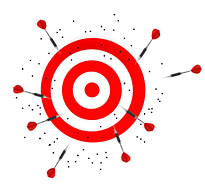
For example, practicing your body position without a mirror is going to have limited success because you don’t have the visual feedback to confirm your efforts. Practicing your lead on count 1 is useless with a practice partner who keeps stepping herself forward before you have a chance.
The best way to vet your practice drill collection is to get suggestions and feedback on them from an instructor in a private lesson.
Criteria for good drills
Always think critically and analyze any good drills you hear: measure them against these criteria:
Is it appropriate?
A drill for tango is not necessarily a good idea to work on your WCS. It might sound great in theory, but may actually be counter-productive. There is no point in practicing a drill that is not directly or indirectly applicable to WCS.
A drill prescribed to your friend by their teacher might not be appropriate for you – the teacher might have assigned them an over-correction for the purpose of fixing a very particular bad habit that you don’t have. Or it might be a drill that is intended for a much higher level of skill and understanding that you aren’t ready for yet. Like prescription medication, don’t assume everything is right for your needs.
Is it authentic?
Is this realistically how I would/should move in WCS? Be sure to use drills only for what they are intended for.
For example, practicing rolling through your feet while walking forward is not how we walk forward in WCS, and will likely produce “Pink Panther sneaking”. The drills you learned for rolling onto the receiving foot were intended for backwards, sideways and stationary; forward uses a different technique.

You must practice any drill with full attention and effort. Half-assed practice will deliver half-assed results. Practicing a skill slowly is fine to start with, as long as you speed it up to a realistic pace as you can handle it.
Is it meaningful?
What is the purpose of the drill? What skill will it build? Is this leading to something practical and useful?
A good drill will serve to condition a muscle group, develop kinesthetic awareness/coordination/new motor skills, retrain old programming, develop creativity, eliminate pain or discomfort, or increase movement efficacy or efficiency.
If the drill has no context or purpose, it’s just busywork, and may actually be counter-productive. For example, you can practice your hitch-ball-change till you are blue in the face, but if you don’t do it in context of partnership, elasticity, and timing, the repetition is meaningless.
Example Drills
Of course, this is a sliver of our drill database – we keep all the good stuff for private lessons and the Swing Literacy programs. These examples are all edited for brevity – there is a whole chapter devoted to some of these topics!

|
|
| |||
|---|---|---|---|---|---|
Criteria:
| Criteria:
| Criteria:
| |||
Hold a cup of water Dance around using proper foot rolling while holding a full cup of water to practice isolating your connection hand from your body movement | Shadow dancing Dancing real patterns with a partner without actually touching is very good training for your visual leading and analyzing body flight, but could develop a bad habit of anticipation in followers or passive overleading in leaders. Best to balance this drill with some blindfolded partnering drills. | Oranges under the armpits This drill teaches followers to hold their arms in a fixed position in an attempt to provide “frame”. Not only does this prevent the follower from contributing to the elasticity, they do not learn to manage their “leash” and are constantly “locked up” and off balance, retracting the arms instead of expanding. | |||
Practice stretch off the fridge Standing in anchor position with your hand on the fridge door handle, stretch your centre by allowing your elbow to expand so the fridge is holding you up at full extension. If the door opens, you know you locked your bicep and pulled your hand. | Overemphasize counts 2,4,6 While this timing drill may help dancers acknowledge the pulse and avoid rushing, it doesn’t really directly address the root of these issues. I would only use this drill at the end of a sequence of other prerequisite drills. In other words, this drill requires a lot more explanation, coaching, and feedback in order to be used effectively. | Hold elastic in your hand While using a theraband to demonstrate and practice elasticity is highly recommended, holding it in your hand defeats the purpose, because instead of teaching your arms how to simulate the elastic, this trains your arm to stay rigid while the elastic does all the work. Elastic should always be placed around the torso. | |||
Paper towel on the floor Place a paper towel under each foot and practice walking around in all directions with rolling technique. If you keep your toe pad gently in contact with the paper towel, it should drag underneath you as you move each foot. | Pivot turns across the floor Pivot turns are only used for turns that are less than 360 degrees. Since the turn technique we use for traveling turns is chaine turns, practicing pivot turns repeatedly across the floor is contraindicative. Better to add a few walking steps in between each pivot turn. | Massaging the floor This analogy sounds great, but does not realistically articulate what the feet need to do on the floor, and can easily be misunderstood and forced. Unlike Cuban motion which transfers most of the weight early and follows through to the hip, WCS rolling is actually a light and gradual weight transfer. “Digging” into the floor on every step is not only slow, but also has caused injuries such as plantar fasciitis. | |||
Walking down stairs We achieve proper dance (and sports) pitch from angling at the hip joint. To simulate, walk up or down a set of stairs, when you arrive at the landing, maintain the same pitch and continue to triple with proper rolling feet. | Dry pattern leading When leaders walk through their patterns, waving their arms around as though leading their imaginary partner, they are effectively practicing memorization, which is good for choreography, but bad for social improvisation. They are ignoring responsive elements such as counterbalance, elasticity, reaction time, and adaptive conversation skills such as back-following, invitations, pattern extensions, and compensations. | Flashlighting This old school advice was originally intended to encourage followers to “keep their frame”. But since it is common for followers to have ineffective frame despite attempting to flashlight, this advice has proven counterproductive. Due to the wider and more shapely slot of modern WCS, frame is better trained via connection drills that are disassociated from body position. |
The Deck of Drills
Wouldn’t it be nice to have a database of drills at your fingertips that you can pack in your shoe bag to pull out and use to work on your dance any time, without a partner?
One of our students, Chrystalene Buhler, created a set of solo practice drills called Deck of Drills. These 52 drills have been vetted by us, so while they are not an exhaustive list, you can rest assured they are all Green Light or Yellow Light drills in 5 categories: Musicality, Personal Movement Skills, Partnership Skills, Conditioning, and Pattern/Footwork.

$30CAD + shipping
These drills are awesome, but they won’t teach you West Coast Swing, and are not intended to replace live or video instruction. What they will do is give you a fun and easy tool to focus your practice and build your solo foundational skills for WCS.
Where can I get more technical material like this?
I normally prefer to steer clear of technical advice in this blog, because technical advice should be delivered in a paid, customized lesson environment.
BUT this article is actually a preview – a sliver sample of the type of content and style of writing offered in the Swing Literacy programs:
100% online training program for accountable, experienced teachers looking for a better, faster, easier way to teach WCS.
100% online training program for eager, motivated dancers looking for a comprehensive curriculum to build their social or competitive skills.
Live progressive intensive workshop offered at select events to dancers and teachers interested in transforming the way people learn WCS.
I highly recommend checking these out!
Got a drill you aren’t sure about?
Submit it in the comments below and we will vet it*! We also reply to questions about drills in our Q&A sessions in our West Coast Swing Teaching Community Facebook page. *Some drills require a much deeper understanding of the dance, which we will not be able to provide in the comments.
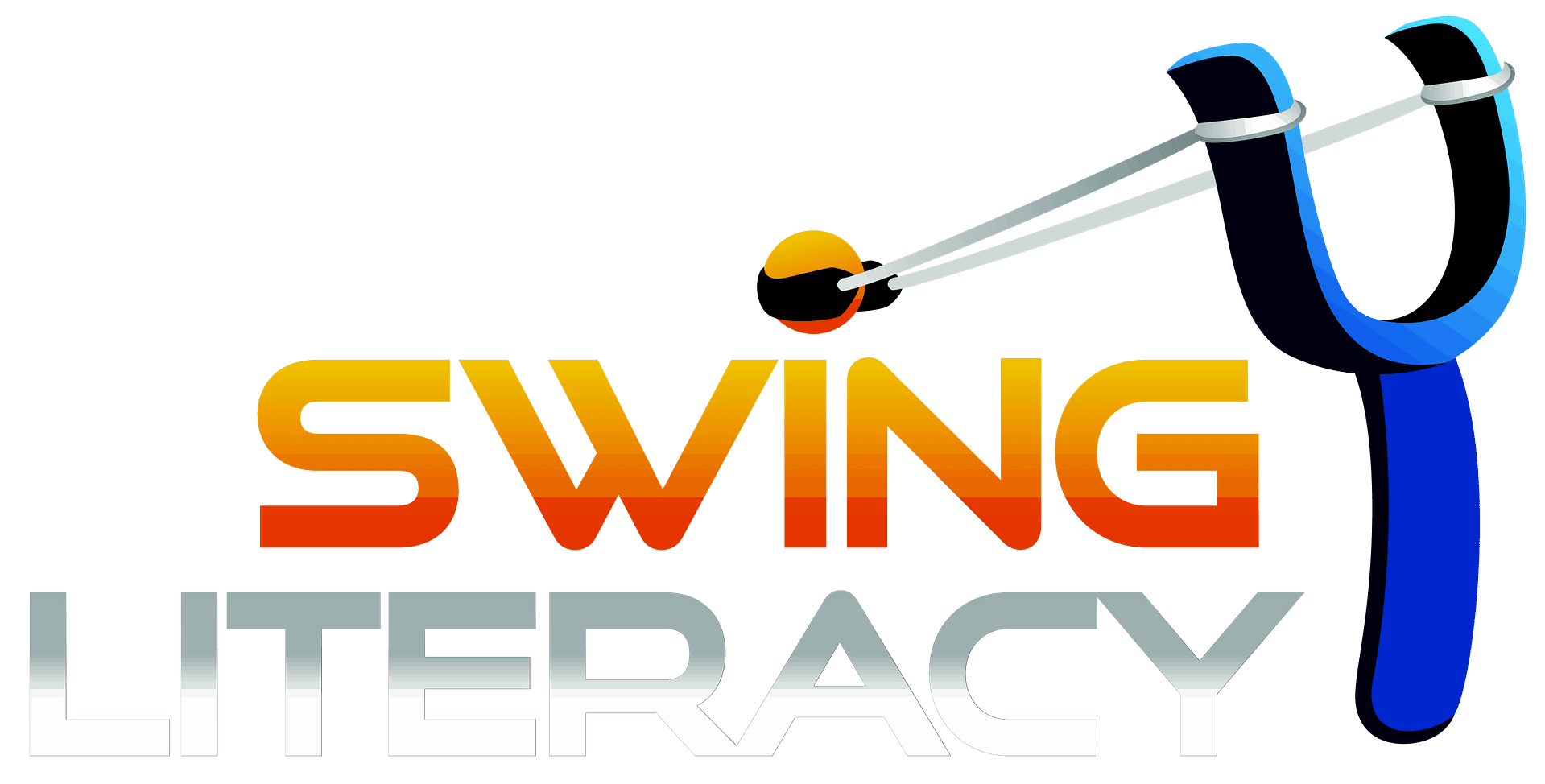
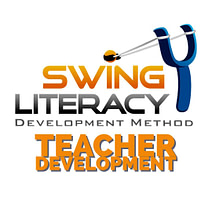
Wow, really great information! Thanks so much for your generosity. :))) Much Appreciation!! Xx
“Is this realistically how I would/should move in WCS? Be sure to use drills only for what they are intended for. For example, practicing rolling through your feet while walking forward is not how we walk forward in WCS, and will likely produce “Pink Panther sneaking”. The drills you learned for rolling onto the receiving foot were intended for backwards, sideways and stationary; forward uses a different technique.” I know this wasn’t intended to be technical advice but WOAH this was so applicable to what I’m working on right now!
This is great info for clearing up when you use rolling footwork. I have had teachers that say u use it all the time but using it all the time just didn’t work well for me.so stopped a while ago
Amen to practice with intent to learn to Best of ability,focussed, alert clean and precise-establish good muscle memory
I was so intrigued by the refrigerator door drill for stretch, that I immediately got up to try it and my jaw dropped and how cool this drill is!